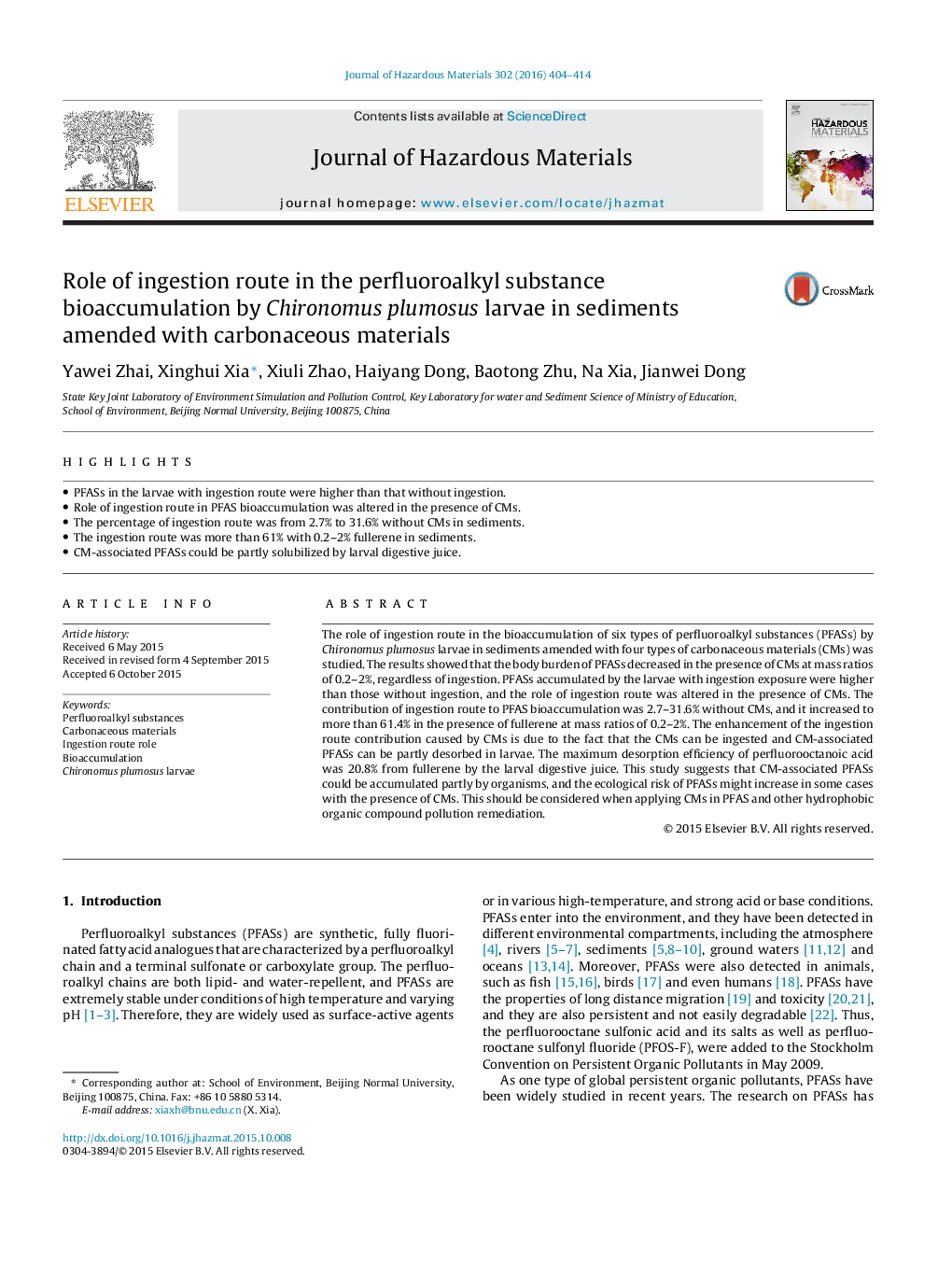| Article ID | Journal | Published Year | Pages | File Type |
|---|---|---|---|---|
| 575633 | Journal of Hazardous Materials | 2016 | 11 Pages |
Abstract
The role of ingestion route in the bioaccumulation of six types of perfluoroalkyl substances (PFASs) by Chironomus plumosus larvae in sediments amended with four types of carbonaceous materials (CMs) was studied. The results showed that the body burden of PFASs decreased in the presence of CMs at mass ratios of 0.2-2%, regardless of ingestion. PFASs accumulated by the larvae with ingestion exposure were higher than those without ingestion, and the role of ingestion route was altered in the presence of CMs. The contribution of ingestion route to PFAS bioaccumulation was 2.7-31.6% without CMs, and it increased to more than 61.4% in the presence of fullerene at mass ratios of 0.2-2%. The enhancement of the ingestion route contribution caused by CMs is due to the fact that the CMs can be ingested and CM-associated PFASs can be partly desorbed in larvae. The maximum desorption efficiency of perfluorooctanoic acid was 20.8% from fullerene by the larval digestive juice. This study suggests that CM-associated PFASs could be accumulated partly by organisms, and the ecological risk of PFASs might increase in some cases with the presence of CMs. This should be considered when applying CMs in PFAS and other hydrophobic organic compound pollution remediation.
Related Topics
Physical Sciences and Engineering
Chemical Engineering
Chemical Health and Safety
Authors
Yawei Zhai, Xinghui Xia, Xiuli Zhao, Haiyang Dong, Baotong Zhu, Na Xia, Jianwei Dong,
